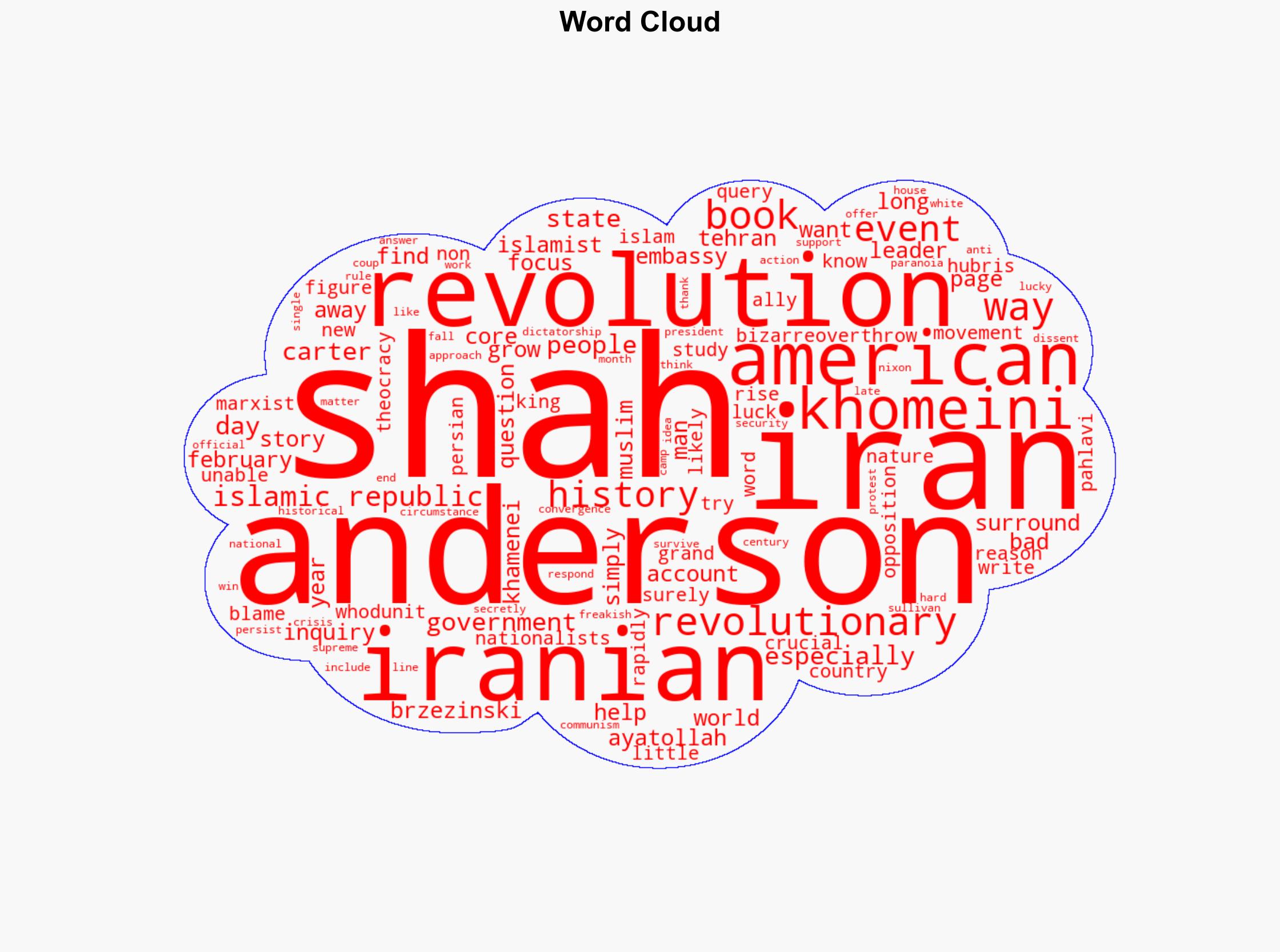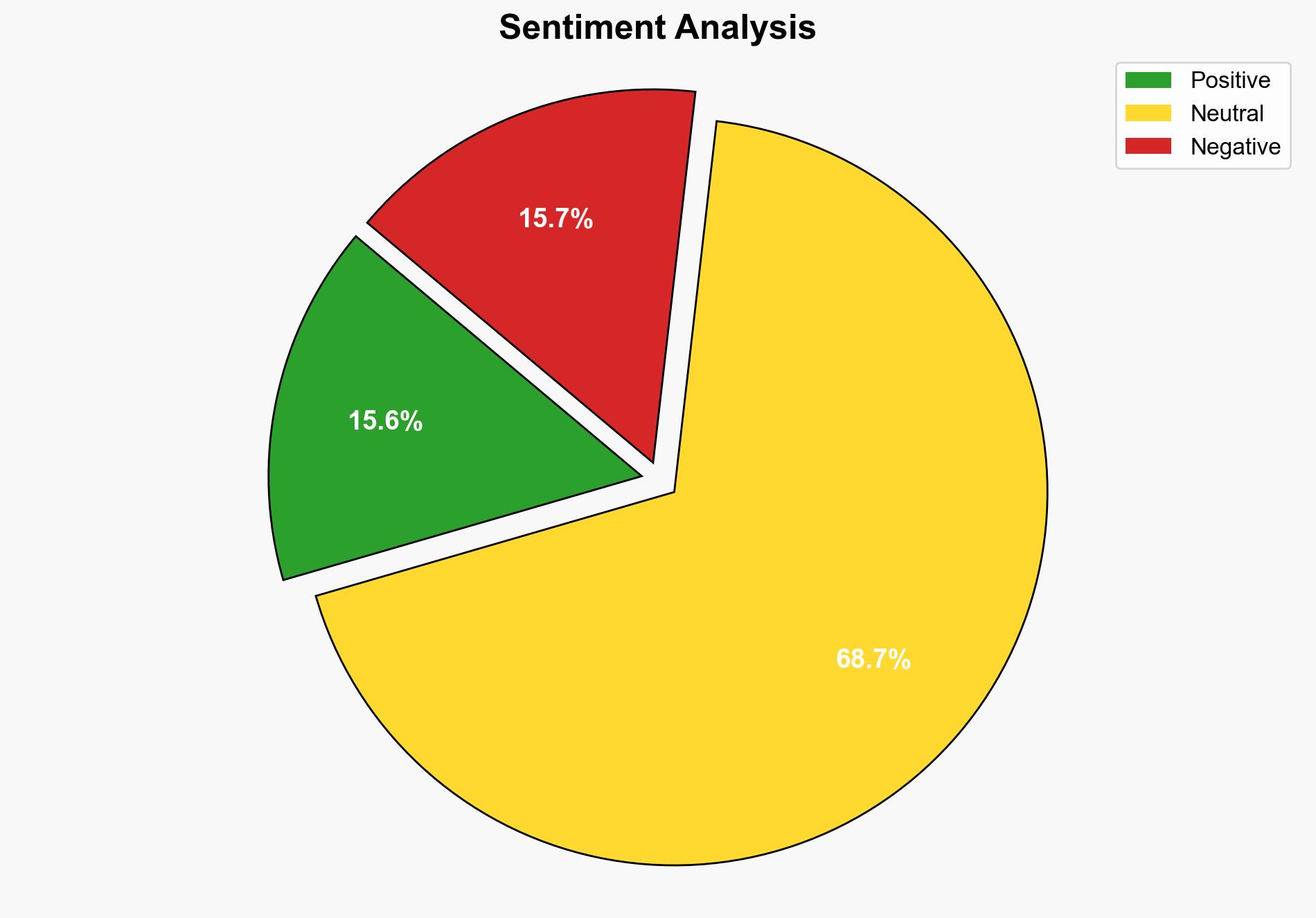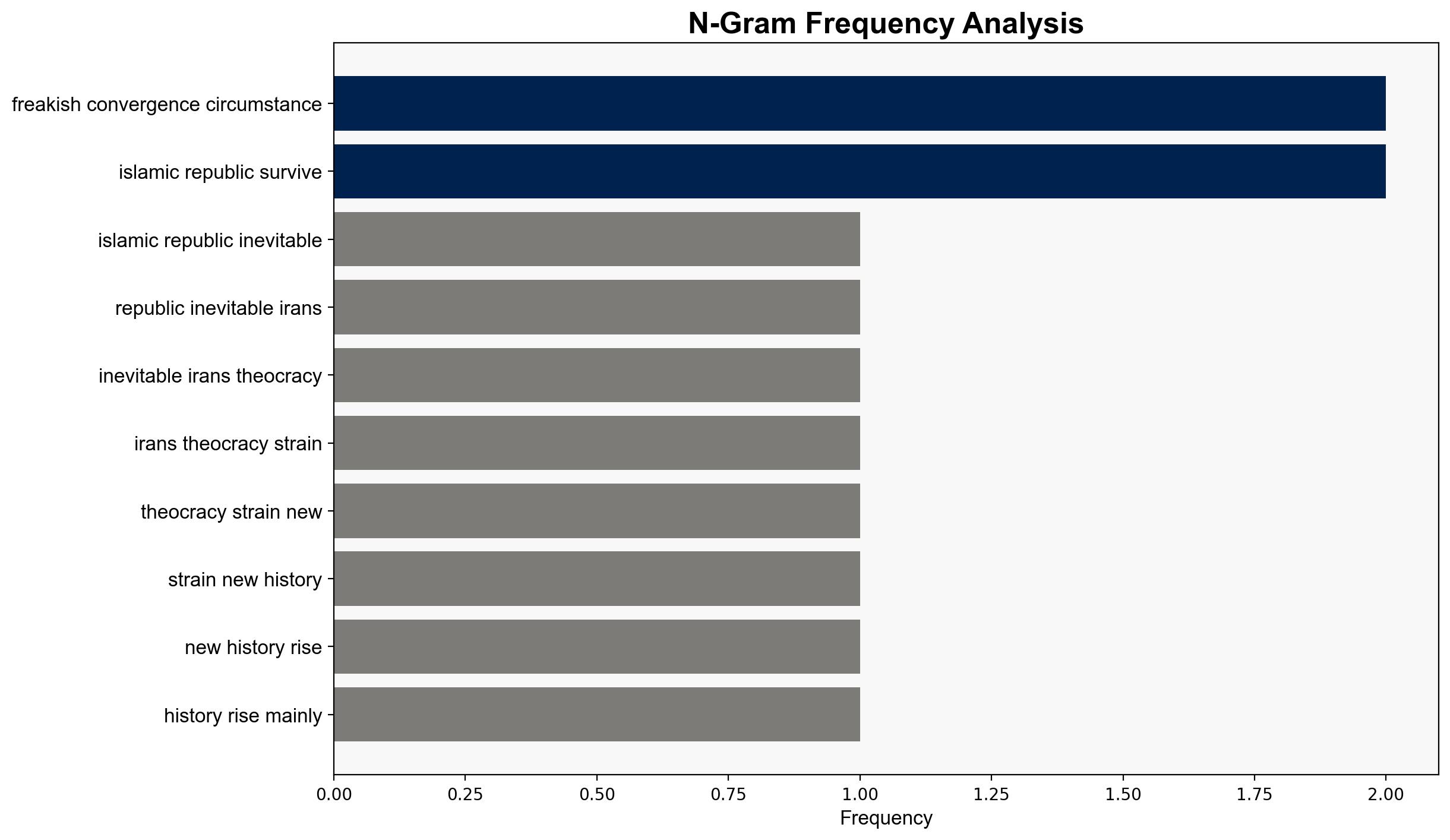The Iranian Revolution Was an Accident of History – The Atlantic
Published on: 2025-08-05
Intelligence Report: The Iranian Revolution Was an Accident of History – The Atlantic
1. BLUF (Bottom Line Up Front)
The Iranian Revolution’s characterization as an “accident of history” suggests a complex interplay of factors rather than a predetermined outcome. The analysis considers two main hypotheses: one positing the revolution as a result of contingent events and another suggesting it was driven by deeper structural forces. The first hypothesis is better supported by the evidence presented, indicating a medium confidence level. Recommended action includes monitoring current socio-political dynamics in Iran for signs of similar contingent factors that could lead to instability.
2. Competing Hypotheses
Hypothesis 1: The Iranian Revolution was primarily a result of contingent events, including miscalculations by key figures and unforeseen socio-political dynamics. This hypothesis is supported by the narrative of unexpected developments and the role of individual decisions highlighted in the source.
Hypothesis 2: The revolution was driven by deep-seated structural forces, including longstanding socio-political grievances and ideological movements, making it an inevitable outcome. This view is less supported by the source, which emphasizes the accidental nature of the revolution.
3. Key Assumptions and Red Flags
Key assumptions include the belief that individual agency and miscalculations can significantly alter historical trajectories (Hypothesis 1) and that structural forces are deterministic (Hypothesis 2). A red flag is the potential bias towards emphasizing contingent events over structural factors, possibly due to the narrative style of the source. Missing data includes comprehensive analysis of socio-economic conditions leading up to the revolution.
4. Implications and Strategic Risks
The analysis suggests that similar contingent factors could lead to future instability in Iran, particularly if key figures miscalculate or if unexpected socio-political dynamics arise. There is a risk of underestimating the role of structural grievances, which could lead to strategic missteps. Potential escalation scenarios include increased internal dissent and regional destabilization.
5. Recommendations and Outlook
- Enhance intelligence gathering on socio-political dynamics in Iran to identify potential contingent factors that could lead to instability.
- Develop scenario-based strategies to address both contingent and structural risks, focusing on diplomatic engagement and regional alliances.
- Best-case scenario: Iran stabilizes through reform and international cooperation. Worst-case scenario: Escalation of internal conflict and regional tensions. Most likely scenario: Continued internal dissent with periodic unrest.
6. Key Individuals and Entities
– Shah Mohammad Reza Pahlavi
– Ayatollah Ruhollah Khomeini
– Queen Farah Pahlavi
7. Thematic Tags
national security threats, geopolitical dynamics, regional focus, socio-political instability





